I’ve been asked quite a bit this summer if I’m a racing fan. My first thought was always, “Uh, no?” Then I think about how many trips I’ve taken my family on in the past 12 months to check out a race: three. Three road trips to watch three different styles of racing. Would a non-fan head all over the country to catch a race? My answer? “Uh, no!” So what does that make me? A race fan! Mr. Locke and I headed to Lucas Oil Raceway in Hendricks County, Indiana to catch the most thrilling of all styles of racing over Labor Day Weekend: The Chevrolet Performance U.S. Nationals! With dragsters flying across the finish line at well over three hundred miles per hour, each race is an exhilarating, heart-pounding whirlwind and we couldn’t get enough, including the nitro methane effect.
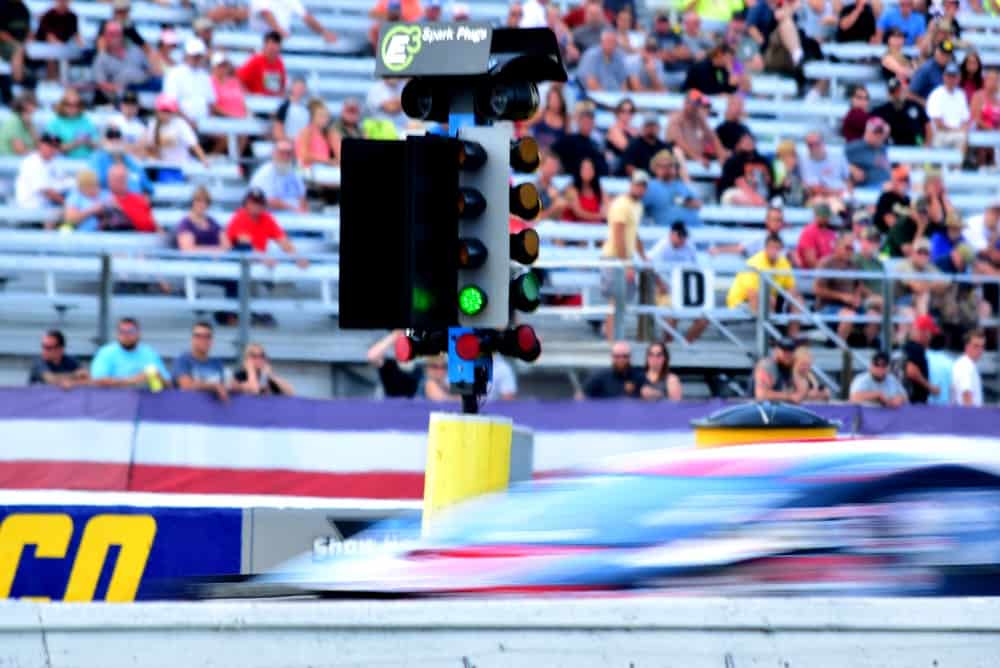
A huge thanks to Visit Hendricks County for hosting Mr. Locke and me for the Chevrolet Performance U.S. Nationals at Lucas Oil Raceway! All opinions are my own!
After a quick check-in at the Visit Hendricks County Suite, we headed straight to the starting line of the drag strip to catch a few races up close, well, as close as we could get, anyway. Compliments of how the drag strip is laid out, there’s seriously not a bad seat in the proverbial house, but as this was our first drag race we wanted those first races to be as intense as possible. Depending on how intense you like your race experience to be, I quickly realized that the intensity increases the closer you are to the start line. The sound and feel of the roaring engines hits you square in the heart and gut- and I loved it.
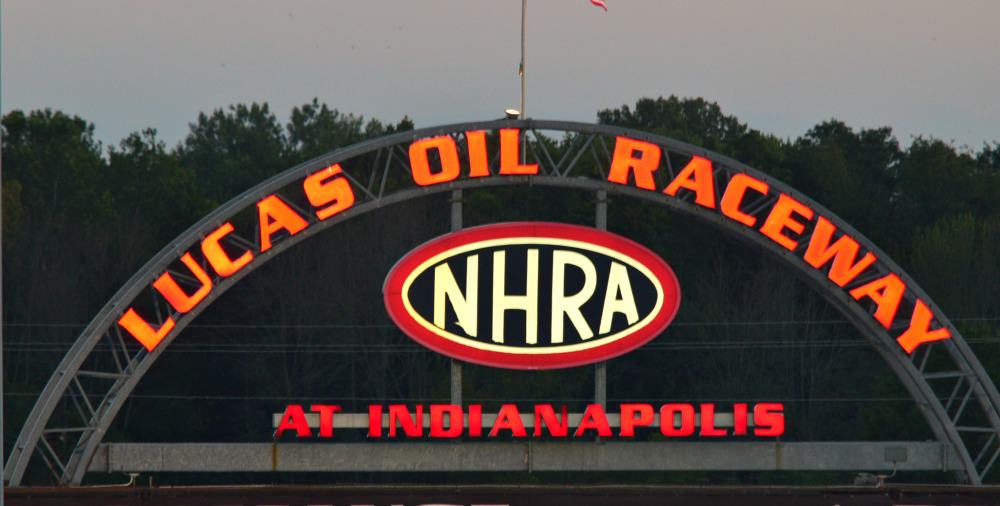
We came prepared with shooting ear muffs (I learned my lesson at Charlotte Motor Speedway by walking straight into the grandstand without ear plugs. Lesson learned, indeed. ) and ear plugs which cancelled out a ton of the engine roar, but that power can not only be heard, it can be felt. It took me a couple of races to get used to the sound and feel but, once acclimated, it was a hoot!
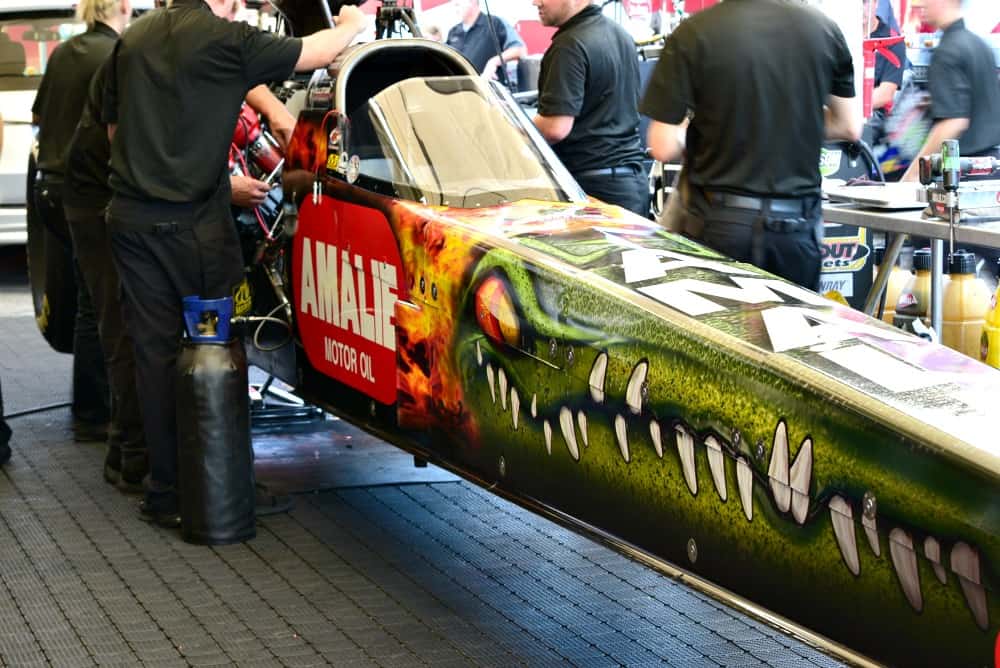
Here’s a cool thing about the U.S. Nationals: each ticket comes with full access to the Pit area. Yep, we moseyed around the pit and checked out the funny cars and nitro (Top Fuel) cars. I was a little sketchy on what makes a Top Fuel Car so powerful, but a visit to Superstar Drag Racer Terry McMillen‘s trailer and a chat with his team opened my eyes. The fuel used in Top Fuel cars is 90% nitro methane- the same fuel used in 1960’s rockets we were told.
I have to add, Terry’s team was so amenable to my dozens of questions (hey, I’m a writer. It’s my nature!) and during our visit we learned all about how an engine is built and rebuilt for each race aside from the block. We hit the trailer at the perfect time to watch his entire engine for his AMALIE Motor Oil XTermigator NHRA Top Fuel Dragster be rebuilt and the science behind how the team fabricates it is so fascinating to me. Engine logs are kept and new engines are tweaked depending on the results of the previous passes, track conditions, and weather.
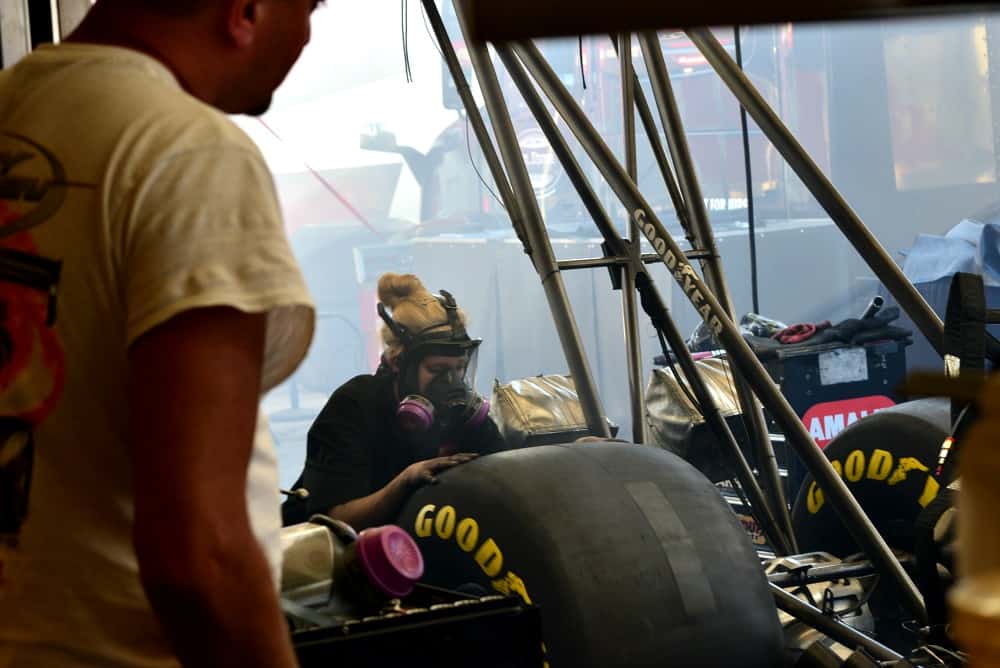
As soon as the engine was rebuilt, they immediately started it up for a test. Nitro methane is not kind to noses or eyes or lungs, so the team responsible for standing down wind wear gas masks. Even a second in the engine’s exhaust will cause your eyes to feel like they’re on fire. Don’t ask me how I know firsthand.
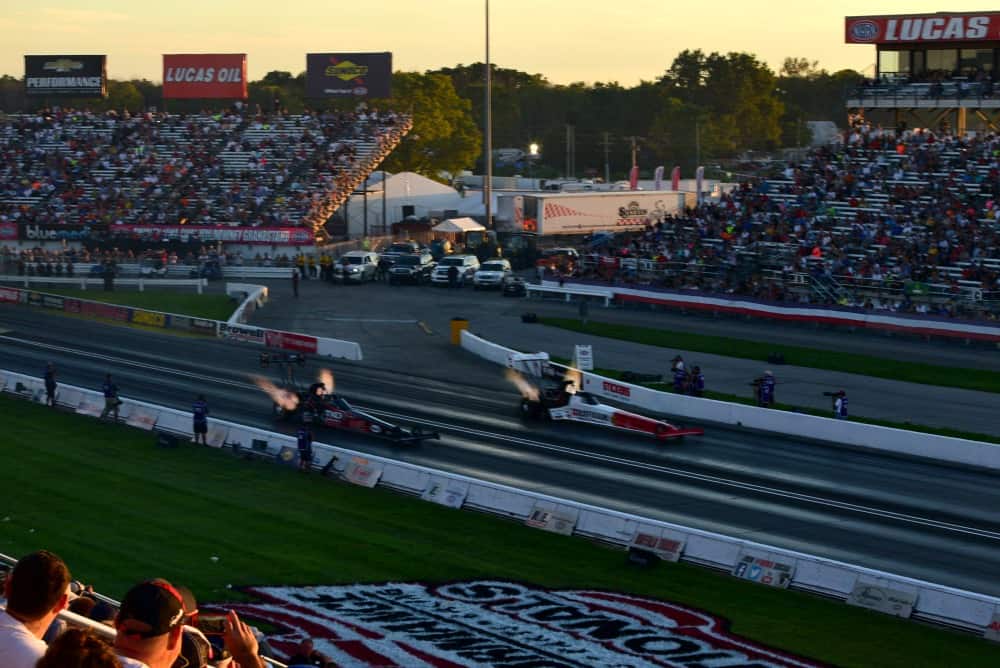
As the sun set and the track cooled off, the drag racers were setting records all over the place. Turns out that when the track cools off the tires are able to grip better, therefore making the runs faster. The racers were able to go 1,000 feet in just over three seconds. Think about for a second (or three): that’s about a football field per second on average.
Now you get it, right?

Leave a Reply